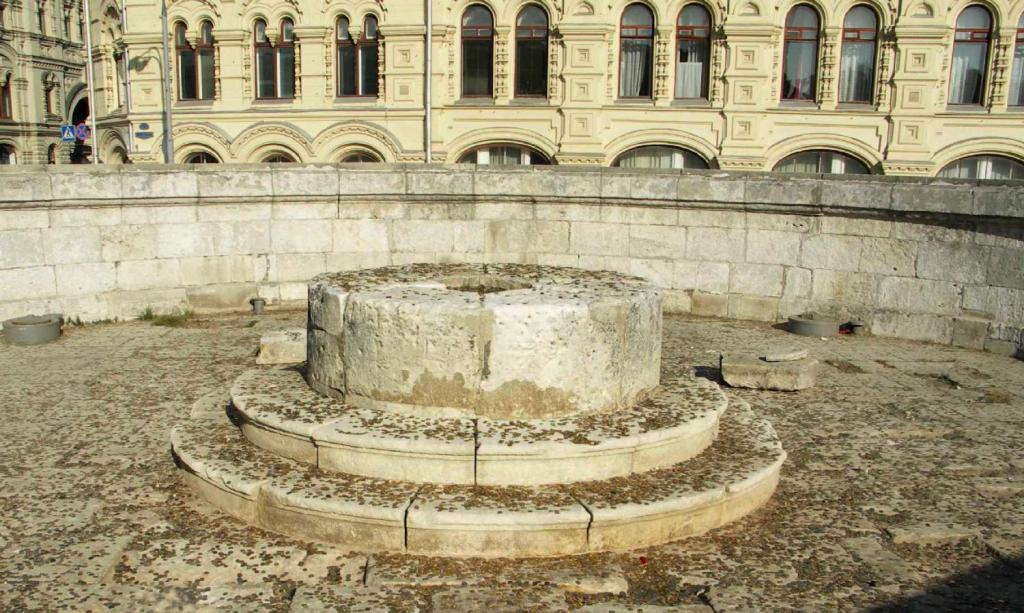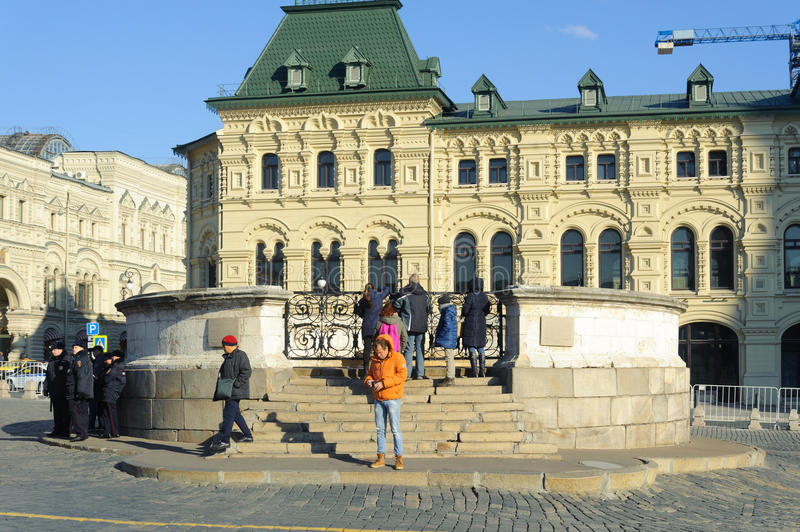Moscow is the capital of our country. Many people have been to this city. Someone loves him, someone hates him. But one cannot fail to admit that Moscow is beautiful architecturally and historically rich, especially its center. Agree, of the Russian cities only St. Petersburg can compete in the number of significant memorial sites, structures, museums and the like. Where is the first thing a tourist arriving in Moscow striving for? Think correctly. There is wealth on Red Square: Frontal place, a famous monument to Minin and Pozharsky, the tomb of Vladimir Ilyich Lenin, it is also a mausoleum. The neighbors of Red Square are GUM, the History Museum and Kazan Cathedral, St. Basil's Cathedral.
Frontal place - this is not for you "Dom-2"
This is not where people just sit. In fact, it is very sad that the modern generation, with the phrase “frontal place”, at first thinks about not the most intellectual broadcast of Russian television. But we will hope for the best in the future. In the meantime, only a very small part recalls that this is a historical place on Red Square. The history of Frontal Place has many different events, which we will talk about. And now let's forget about the 21st century generation. So, returning to an educated society, we recall that the Forefront is an architectural monument of Ancient Russia, which is an elevation surrounded by a stone fence.
Where did the name come from: version one
The etymology and history of the Forehead place a lot of controversy among historians and linguists. Disagreements and conflicts continue to this day. One of the existing versions of where the name came from is that the "frontal place" appeared due to the fact that it was here that "chopped / folded foreheads." But this is an erroneous theory.

Many believe that it was here that public executions took place in the XIV-XIX centuries. It is not true. According to history, Frontal Place on Red Square was intended to publicize the decrees of the kings and a variety of solemn public events. Executions were usually carried out on Bolotnaya Square. In 1682, for the first time, a person was deprived of his life in Frontal Place. It was the schismatic Nikita Pustosvyat. In 1685 a decree was issued, which commanded henceforth to carry out executions on the Forefront. But a new reprisal against people displeased by the authorities took place here only in 1698, this happened when the Streltsy rebellion was suppressed.
Where did the name come from: version two
There are sources that claim that the phrase “frontal place” translates as Kranievo place (from Greek) or Golgotha (from Jewish). Another option connects the name only with the location. The point is located at the very beginning of Vasilievsky descent, which in the Middle Ages was called the forehead. Hence the name of the place supposedly went.
The beginning of the story
Moscow city legends say that the Forefront appeared in the year the Tatars were expelled from Moscow, events occurred in 1521. On the pages of the annals it was first mentioned in 1549, when Ivan the Terrible spoke to the people with an appeal for peace among the warring parties. At that time he was only 20 years old. According to the Moscow drawing of Godunov’s time, it’s clear that Lobnoye Mesto was a brick platform, which was rebuilt in stone in 1597-1598. In addition, it is also clear from historical information that the platform had a wooden grill and a tent or canopy mounted on poles.
Frontal Place Repair in the 18th Century
The beginning of the century was marked by plans for a large alteration. The first restoration of the Execution Ground in 1753 was carried out by Dmitry Vladimirovich Ukhtomsky, who was the main Moscow architect during the reign of Empress Elizabeth Petrovna. In 1768, he was moved east of the original location. A stone railing and an entrance (an iron grate and a door) are added to the round circular platform. The path to the upper platform consisted of eleven steps.
Historical meaning
From the time of the reign of Peter I, the greatest place in history was held at the Forefront. From ancient times until the October Revolution, solemn church processions with a large cross, icons and banners around the church or from one church to another made a stop next to it, from where the bishop overshadowed ordinary people a sign. Since 1550, this place takes on a different meaning and becomes royal. It is called the royal tribunal or department. Prior to the reign of Peter the Great, important state decrees were announced to the people at the Forefront. Sometimes solemn events took place. According to the Polish ambassadors, in 1671, the ruling king appeared to the people once a year at the Place of Execution. If his heir was already at that time 16 years old, then he showed it to people. A variety of issues were covered in the Forefront: the election of a new patriarch, the beginning or end of the war, and the like.
20th century history
With the rise to power, Vladimir Ilyich Lenin developed a plan for monumental propaganda. In accordance with it, in 1919, a monument "Stepan Razin with a team", wooden and painted under a folk toy, was erected on the Forehead Place. But the weather played a role, so the ensemble was moved to the indoor museum. In 1928, a new sculpture, “International Solidarity,” which was part of the complex design of Red Square for the holiday on November 7, was erected at the Forefront. Until 1940, in different variations, the sculpture was installed every year for the holiday. IN
In 1945, by the June Victory Parade, a grandiose fountain was built on the Forefront, on the top of which there was a worker and a collective farmer, a statue with greenery and fresh flowers. It looked impressive. Photos of Frontal place of that time show all the architectural wealth of the Soviet period.
What now? To date, the Forefront is one of the constituent parts of the architectural ensemble of Red Square and is under state protection. Until recently, tourists followed an interesting and widespread tradition in many countries - to throw a coin inside the structure in order to return to this place once again. However, now they are throwing them near the sign "Zero kilometer of Russia". You can get to that part of the city where Lobnoye Mesto is located by metro, the closest stations to it are Ploshchad Revolyutsii, Teatralnaya, Okhotny Ryad. It is enough to use the map and correctly plan your route.

Why is it considered that when visiting Red Square, you definitely need to see the Forefront? History. That's the whole answer, simple and straightforward. Just think about it, these stones have been stored for more than four centuries of history, remember many different events: from cruel executions to solemn state events. If you will ever be near the Place of Forehead, think about the fact that four hundred years ago people also stood here and listened to the tsar or his envoys, who read out news that could radically change the lives of ordinary people. History must not be forgotten. As you know, that nation that does not remember its past has no future.